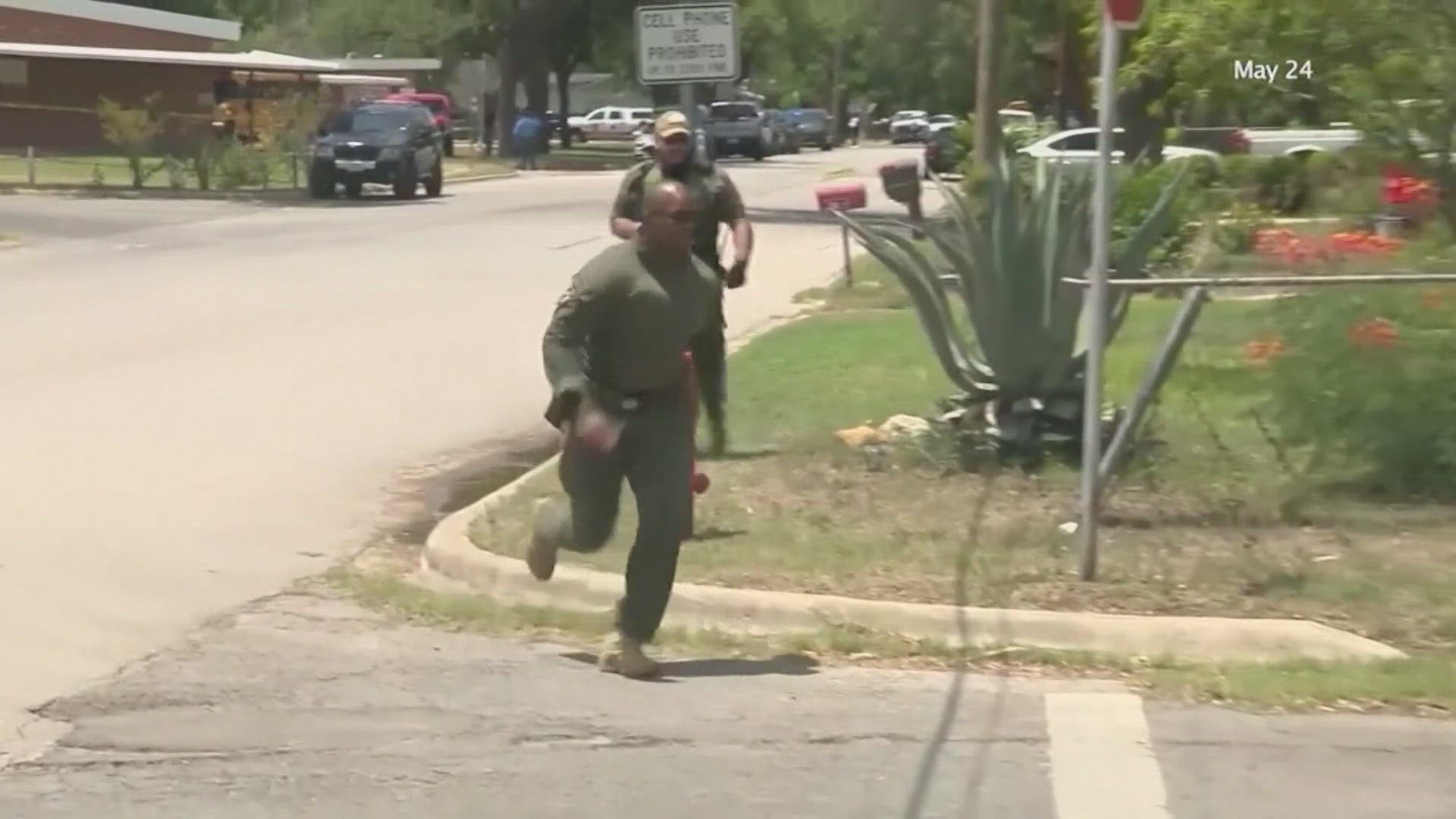DALLAS — The Washington Post Thursday entered new photographs in American history's album.
The outlet published never-before-seen pictures taken after mass shootings to accompany victims' accounts of those events. The article features graphic images from Robb Elementary in Uvalde, First Baptist Church in Sutherland Springs, and other tragedies.
Victims and their relatives are split on whether the photos should have been released.
"There seems to be no real consensus, even among survivor and victim's communities, about what the right thing is to do and about whether graphic images or images of victims can move the ball forward," said Silvia Foster-Frau, a Washington Post national reporter who conducted interviews included in Thursday's article.
Foster-Frau says her team consulted victims' advocates and experts to help find a balance between delivering information in the public's interest and being respectful and humanizing. The paper did not publish all the photos it obtained.
"We wanted to find the photos that best illustrated these everyday spaces... churches, malls, schools," she continued. "Seeing the contrast in that with the kind of tragedy and destruction that could happen in those places - what we found most powerful was that kind of pairing in these photos that really strike you as, 'Oh, this is something that could happen to me. This is something that could happen to my loved ones.'"
The Washington Post will continue to roll out stories within a series on assault-style weapons and AR-15s in the coming weeks.
"One of our explorations of that is trying to show just how devastating these scenes can be when these AR-15 rifles are used," Foster-Frau said.
The article's release prompted some debate over its inclusion of graphic photos. Such discussion is not new or unique to stories about mass shootings, SMU professor of corporate communication and public affairs Rita Kirk said.
"When we see those pictures, they seer into our brains and we are always cognizant of those as we look at other events," she said. "We compare other events to them."
Kirk contends that journalists sometimes mistakenly believe powerful images will persuade people. In some cases, she says graphic imagery can have an effect opposite that intent.
"We're flooded with these images of spectacular things," she said, predicting the Washington Post article will prompt some to purchase guns for protection. "It hardens us."
Psychologists worry inundation with disturbing imagery has desensitized a generation of young people. Children have easy access to such photographs on social media, even if they do not seek out the pictures.
Whether graphic imagery impacts a person's behavior depends on their background, licensed counselor Kristy Donaldson says.
"There's a lot of different components and variables that can intensify the reaction or desensitize the reaction," she explained, noting children also witness violence media through video games and television.
"Over time, all of these images they're seeing could end up producing a desensitized understanding of reality," she said.
For better or worse, though, people who see such pictures will remember them, Kirk believes.
"I don't think they lose their power, ever," Kirk concluded.

